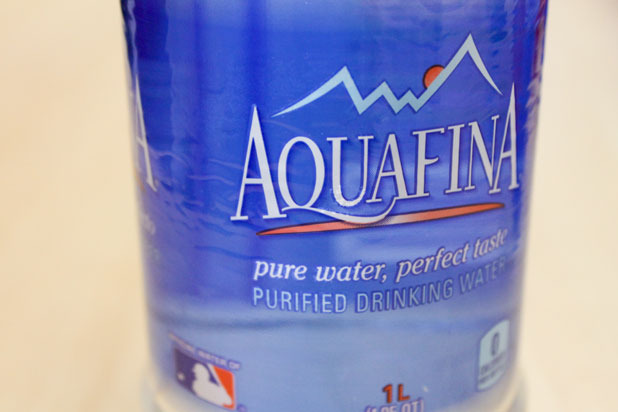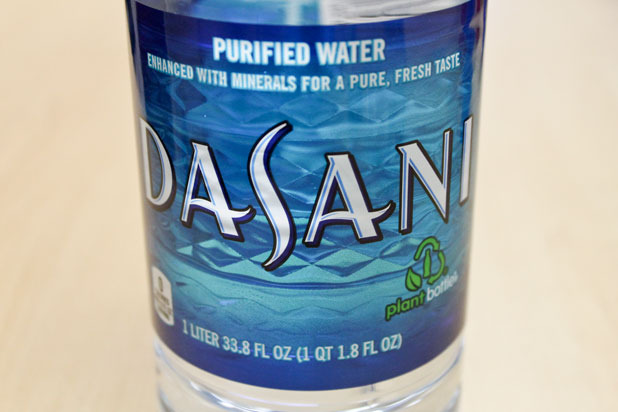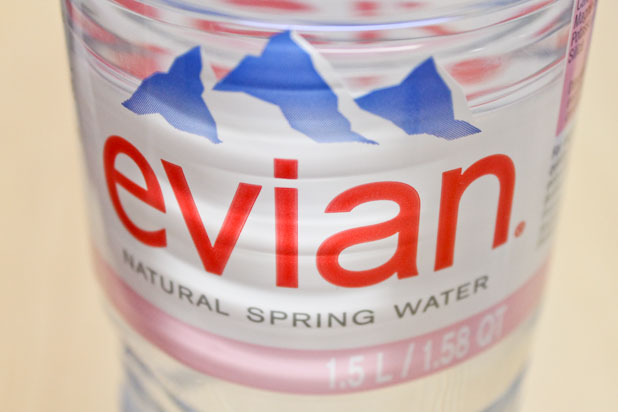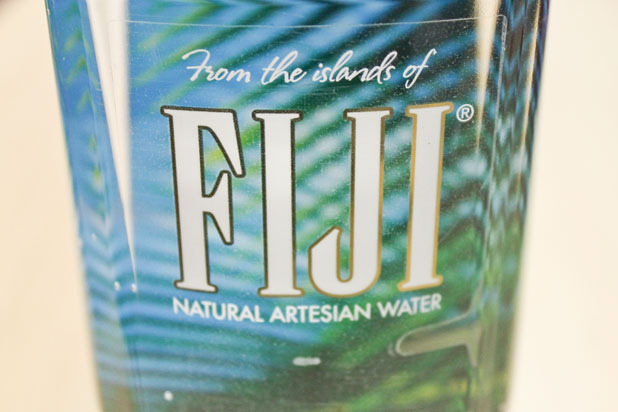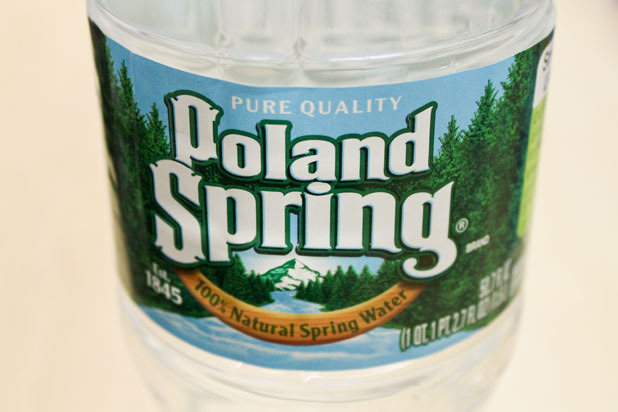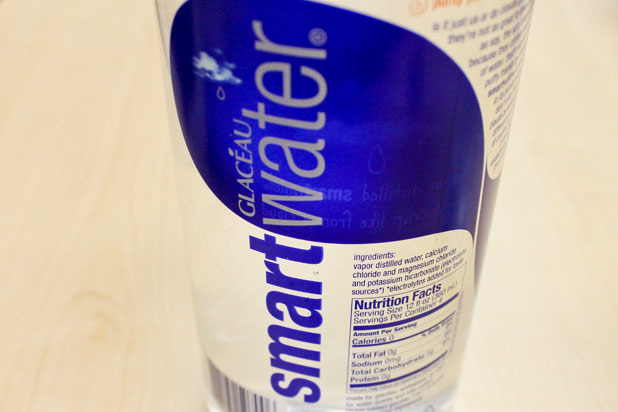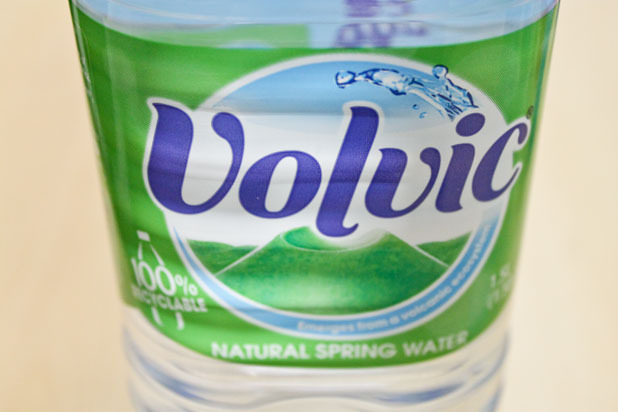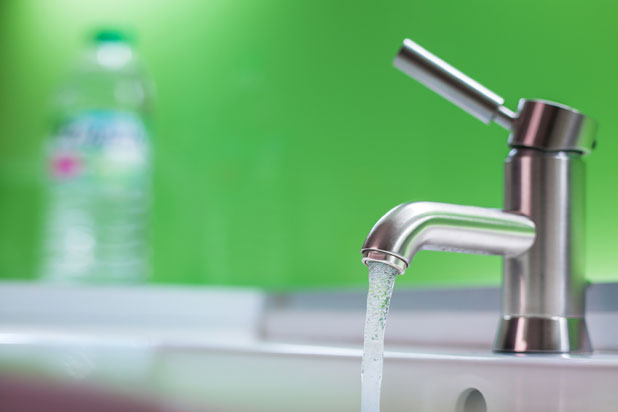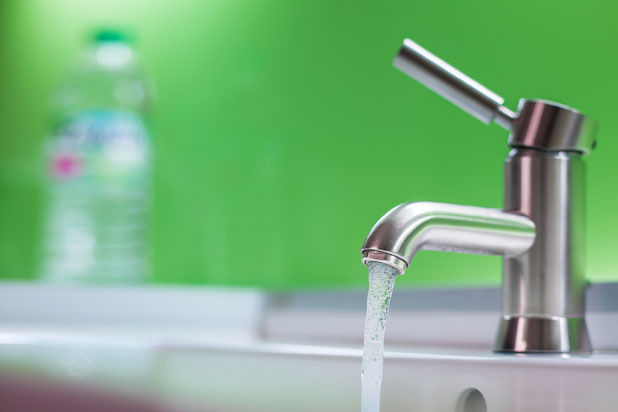What You Didn't Know About Your Bottled Water Slideshow
For our taste test, we sampled seven bottled waters, two tap waters from different states, and filtered water from our test kitchen's KitchenAid fridge. The waters were poured into Solo cups and numbered, so testers could pour water into their own cups and test them. The Daily Meal staff was asked to grade them (as if they were a paper in class, 60 percent to 100 percent), and to give comments on the taste, aftertaste, and general feelings on it. Some even guessed which waters were tap and bottled.
3. Aquafina
Does it list its treatment process: Yes
On its website, you can watch a demo of its treatment process: prefiltration, filtration, "intense light" (which we can only assume are UV rays), reverse osmosis, charcoal filtration, polishing filter, and ozonation.
Does it list its sources: Yes
The Aquafina website links to its bottler and water source information.
Does it list its water quality analysis: Yes
On the Aquafina website, there is a 2011 sample water quality analysis as an example, with the note: "Our Aquafina plants each conduct on average 320 tests daily, 1950 tests weekly, and — when we include off-site monitoring, 102,000 tests annually to assure the consistent quality of our Aquafina bottled water."
How does it taste: Number three out of 10, with a score of 78.66
"Virtually no taste," said one tester — which may be why Aquafina won over so many testers. Still others said they detected a sour flavor or an aftertaste from the water; one commented on a "super plastic-y" taste.
2. Dasani
Well, this would have been a much easier task had there been a website for Dasani other than a garbled Facebook page. (No, I do not want to do a Flavor Dance for Dasani Drops.) The Coca-Cola website was no help, either. Instead, we had to go off what the label said.
Does it list its treatment process: No
However, the ingredients label reveals something interesting: it contains water, magnesium sulfate, potassium chloride, and salt. With an asterisk, the label says the salt "adds a negligible amount of sodium," and "minerals added for taste." We'll see how that does. Magnesium sulfate, as defined by the EWG, is "an inorganic salt; found in sea water and in mineral deposits" and is a safe food additive as defined by the FDA; potassium chloride is another inorganic salt with the same safety status.
Does it list its sources: Yes, if you know what to look for
The label says "purified water," which our sources say is a sign that it's really filtered municipal water — and that's what the company has admitted to over the last few years.
Does it list its quality analysis: No
How does it taste: Number two out of 10, with a score of 81.25
"Refreshing," "clean," "sharp," and "mineral" were the most commonly used words to describe Dasani.
7. Evian
Does it list its treatment process: Not really
From the website: "Each drop of Evian starts as rain and melting snow on the peaks of the Northern Alps. It filters through layers of glacial sand on a 15+ year journey deep in the heart of the mountains. Through this process, Evian is filtered naturally, without chemicals, giving it the purity, mineral content, and taste that nature intended."
Fine and dandy... we guess. But the website does break down the mineral content of its water on the same page, as well as on the label, so that's handy. The source page also has some YouTube videos that try to explain the "mineral vesta" of the Alps and its filtration process.
Does it list its sources: Sort of, but not really
We know it's from the Alps. There are multiple YouTube videos on its website that are supposed to explain how the water travels over 15 years through the Alps but... that's it.
Does it list its water quality analysis: Maybe
There are links from the main site to water quality reports for California and one for all other states, but the URLS are coming up empty.
How does it taste: Number 10 out of 10, with a score of 67.5
Yeah, it didn't fare that well with our testers. "Mineral-y," "soft,"... one called it "toilet water" but we think that's harsh. One tester immediately guessed it was Evian because of its softness, which is a defining descriptor of Evian from other tests we've seen. Perhaps because we're New Yorkers who like a hard tap water.
5. Fiji
Does it list its treatment process: Yes
From the website: "FIJI Water's state-of-the-art bottling facility was designed to protect the purity of our water at every step of the production process, and as part of that strict commitment to quality, no human hands are allowed to touch it. In fact, the facility was built directly on top of the FIJI Water aquifer, where a completely sealed delivery system draws the water up from the protected chamber and places it directly into our iconic square bottles, which are made from the highest-grade terephthalate (PET) plastic resin. To put it simply, until you unscrew the cap, FIJI Water never meets the compromised air of the 21st century nor is it touched by another human being. No other natural waters can honestly make that claim."
Does it list its sources: Yes
From the website: "FIJI Water comes from a single place: the remote Yaqara Valley of Viti Levu (one of Fiji's two principal islands). Here, hundreds of feet below an ancient rainforest, is a vast, geologically unique, underground aquifer from which we draw our water." FIJI also claims to be the only artesian sourced-water of the top 10 bottled water brands in America.
Does it list its water quality analysis: Yes
Through the FAQ section of its website, FIJI gives a water quality analysis test, with more details on the filtration and bottling process (no word on the date of the report, though). Also, on the label is the typical analysis of certain minerals — silica, calcium, magnesium, pH, etc. — in milligrams per liter (on the 1 ½ liter bottle we bought).
How does it taste: Number five out of 10, with a score of 75
One tester said it was the "cleanest by far," but others said it tasted filmy ("but not in the worst way"), stale, and flat. One tester said it tasted like the water fountain.
1. Poland Spring
Does it list its treatment process: Yes
The website redirects to the Nestlé Waters website, with detailed reports on its spring water "10 step quality process" for treatment.
Does it list its sources: Yes
The website gives a little blurb on finding sources, etc., etc. But the label on our bottled gives a laundry list of sources that the water came from: Clear Spring, Hollis, Maine; Evergreen Spring, Fryeburg, Maine; and the list goes on. The Nestlé Waters website says that Nestlé waters come from 50 springs, but doesn't say where the springs are.
Does it list its water quality analysis: Sort of
A quick Google search (we couldn't find a link on the website) brought us to a PDF with the quality report from 2010.
How does it taste: Number one out of 10, with a score of 81.75
One very anti-bottled water tester remarked after the taste test that the only bottled water she bought was Poland Spring because of the price — and now we can take a note from her. It wasn't a hit with everyone (two thought it was tap water, one believed it was bathroom faucet water) but others said it was clean, smooth, and simple.
6. Glacéau Smartwater
Does it list its treatment process: Sort of
If you can get through the sing-songy descriptor on the label and website, you'll find that the water is vapor distilled, with added electrolytes. It basically says it mimics the process of rainwater. However, a bottled water report goes into more detail about how it's purified: with charcoal filtration, vapor distillation, ultraviolet light disinfection, re-mineralization (if that's a word), and ozonation.
Does it list its sources: Yes
From its bottled water report: "Most facilities that purify and bottle Smartwater procure water from municipal water systems. At a few plants, however, water is obtained from protected groundwater sources managed by the bottling plant, with approvals from local authorities."
Does it list its quality analysis: Yes
Again, from the same bottled water report, Smartwater breaks down all of the minerals and elements found in its water in a typical analytical report.
How does it taste: Number six out of 10, with a score of 74.08
Clean was the all-around description of it, but others said it felt heavy and others said it felt soft.
4. Volvic
Does it list its treatment process: Sort of
The website gives a report on the natural filtration process, but that's about all you get.
Does it list its sources: Yes
Right on the bottle and on the website: it's sourced from the Clairvic Spring in Volvic, France.
Does it list its quality analysis: Yes
The website does break down its mineral content, and says that it complies with the World Health Organization, NSF International, and FDA standards. A link at the bottom of the website gives the full water quality report.
How did it taste: Number four out of 10, with a score of 78.12
It was described as clean, "normal," and "plain" (with a side note: "but that's how it should be?"). Others noted no aftertaste, while one person said it tasted chalky.
7., 8., and 9. Tap Water and Filtered Water
To see just how good our palates were, we tested the seven bottled waters against New York City tap water (said to be one of the best tap waters in the country), tap water from Maine, and filtered water from our KitchenAid fridge. Here's how they compared:
New York City tap water: Number seven out of 10, with a score of 72.92
You'd think we New York City residents would have picked it out better among the lineup. Some testers did catch on (one wrote "plain, uneventful water. Oh wait... tap"), others noted a more mineral flavor with an aftertaste. It sure made us question our city's beloved tap water.
Maine water: Number nine out of 10, with a score of 67.92
We thought surely water from East Booth Bay, Maine, would have a fresh taste — but lo and behold, it was practically reviled among our testers. "Gross," "muddy," "terrible aftertaste," and the list went on and on. Nearly every one of our 12 testers guessed that it was tap water.
Filtered fridge water: Number eight out of 10, with a score of 70.83
No one was a fan of the filtered water, either. One person said it tasted like chlorine, another person said it tasted like pool water. Everyone believed it was tap water.
No. 7, 8, and 9: Tap and Filtered Water
To see just how good our palates were, we tested the seven bottled waters against New York City tap water (said to be one of the best tap waters in the country), tap water from Maine, and filtered water from our Kitchenaid fridge. Here's how they compared:
New York City tap water: no. 7 out of 10, with a score of 72.92
You'd think we New York City residents would have picked it out better among the lineup. Some testers did catch on (one wrote "plain, uneventful water. Oh wait... tap"), others noted a more mineral flavor with an aftertaste. It sure made us question our city's beloved tap water.
Maine water: no. 9 out of 10, with a score of 67.92
We thought surely water from East Booth Bay, Maine, would have a fresh taste — but lo and behold, it was practically reviled among our testers. "Gross," "muddy," "terrible aftertaste," and the list went on and on. Nearly every one of our 12 testers guessed that it was tap water.
Filtered fridge water: no. 8 out of 10, with a score of 70.83
No one was a fan of the filtered water, either. One person said it tasted like chlorine, another person said it tasted like pool water. Everyone believed it was tap water.

